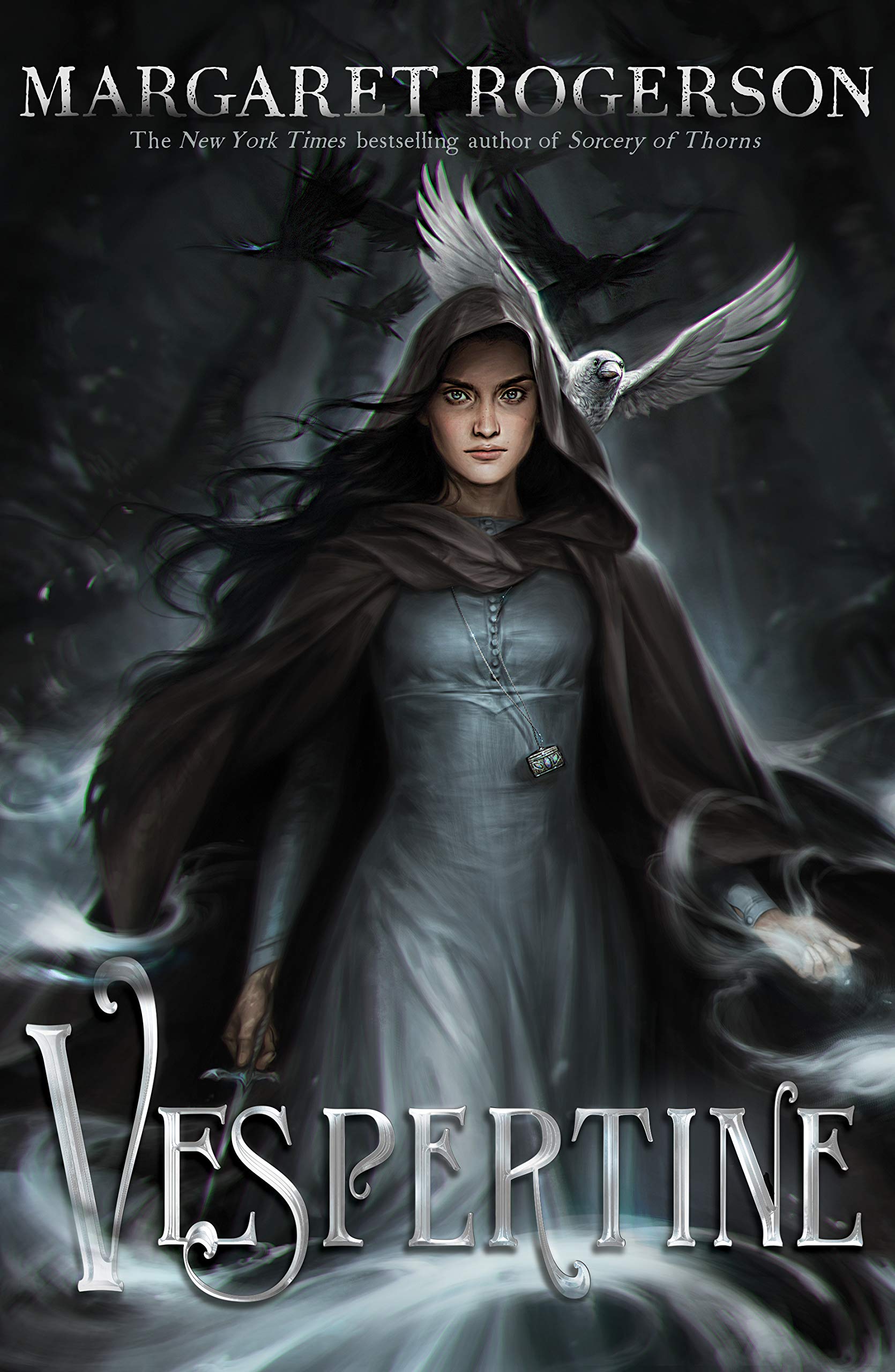Vespertine by Margaret Rogerson thrusts its readers into a world where the dead can rise at any time, and do in the first scene of the book. Within a few pages I found myself rooting for Artemisia and intrigued by the little lore Rogerson had already brought up.
From the Blurb:
The dead of Loraille do not rest.
Artemisia is training to be a Gray Sister, a nun who cleanses the bodies of the deceased so that their souls can pass on; otherwise, they will rise as spirits with a ravenous hunger for the living. She would rather deal with the dead than the living, who trade whispers about her scarred hands and troubled past.
When her convent is attacked by possessed soldiers, Artemisia defends it by awakening an ancient spirit bound to a saint’s relic. It is a revenant, a malevolent being that threatens to possess her the moment she drops her guard. Wielding its extraordinary power almost consumes her — but death has come to Loraille, and only a vespertine, a priestess trained to wield a high relic, has any chance of stopping it. With all knowledge of vespertines lost to time, Artemisia turns to the last remaining expert for help: the revenant itself.
As she unravels a sinister mystery of saints, secrets, and dark magic, her bond with the revenant grows. And when a hidden evil begins to surface, she discovers that facing this enemy might require her to betray everything she has been taught to believe — if the revenant doesn’t betray her first.
Artemisia was a very particular character. She had a very difficult childhood in terms of how her parents treated her and that impacts her character throughout the book. Disabled as a child because of a fire, and having formed bad habits because of her upbringing, she finds herself an outcast among her peers in the monastery. When she bonds with St Eugenia’s relic, the demon becomes her first true companion despite their differences. As the book progressed, I found Artemisia an inspiring character, though headstrong and very impulsive. The demon becomes a good influence on her as it tames those impulses, however heroic they may be, and gets her out of sticky situations alive.
Another character that experiences mental difficulties is the demon. It found itself isolated for centuries which had a deep impact on its psyche. As such, the demon and Artemisia counter-balance each other with some profound scenes shared between the two of them. I thought the way Rogerson brought up the mental health aspect was respectful. While they were hard passages to get through they contributed to the understanding of both characters rather than being there to add some spice. I particularly appreciated the stance both Artemisia and the demon took when it came to each other in that aspect.
To reach this point the two had to obviously trust each other, and Margaret Rogerson does a wonderful job developing their relationship. What started out as a Hail Mary grows into a partnership and eventually a friendship with great sacrifices from both sides. To make things even better, the banter doesn’t stop once they do become friends; instead it loses some of its meaner edge.
While the other relationships don’t take center stage, they are no less important. The friends Artemisia makes throughout her journey are each special in their own regard and that comes through particularly at the end. It takes all of them to defeat the villain and Rogerson made sure to build every character up for their moment, as small as it was.
Plot wise, the narrative was coherent without the subplots crowding it. It takes a while to understand the overarching plot because some of the key elements aren’t revealed until the very end. That meant I was just as in the dark as Artemisia was without finding it off-putting. As far as how it develops, in retrospect I can see the pieces Rogerson laid out but in the moment I only suspected a couple of the twists. The pace was good while the dynamic opening scene really did a lot to suck me in. I could barely put the book down in the three days it took to read.
The worldbuilding is something else in this novel. Rogerson’s worlds were always fantastical to me, and this one is no exception. Loosely inspired by Catholicism and the French enlightenment era, there’s an importance to this central religion that is inescapable as it’s the only protection the people have against the dead. Following an unspecified event centuries ago, a class of saints wielded magic to vanquish the rising dead which then went on to give the rigid religious structure encountered in Vespertine. As the book progressed and Rogerson revealed other aspects of the world, it became so much more expansive despite the story only being set in two cities. Rogerson’s prose is beautiful and that extends to her worldbuilding as I could very easily imagine every scene.
Overall Vespertine by Margaret Rogerson stunned me. I was sucked in by the action and stayed for the friendships made along the way. I am very excited by the fact that this is going to be a series because, while the ending is closed enough that this could have been a standalone, I just need more of Artemisia and her demon buddy.









Bookstacked Comment Policy
We welcome respectful comments. Our only rule is to be kind. Rude, hateful and generally mean-spirited comments will be removed.